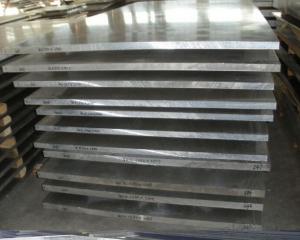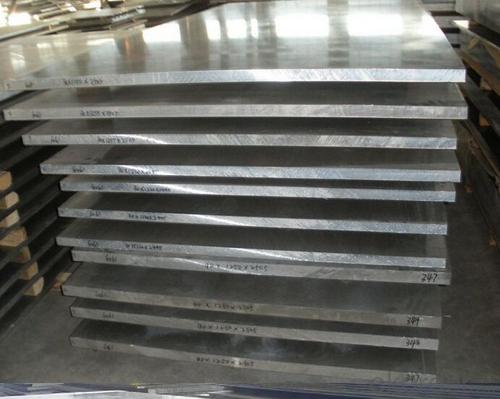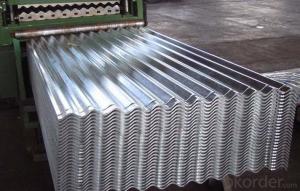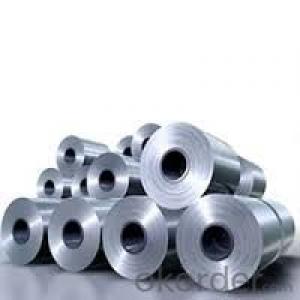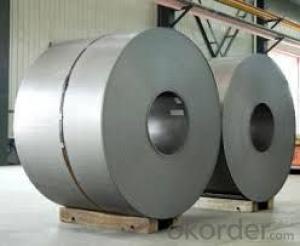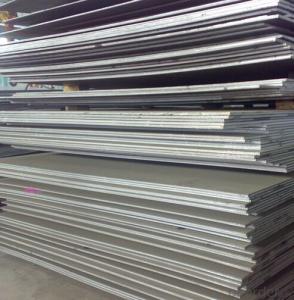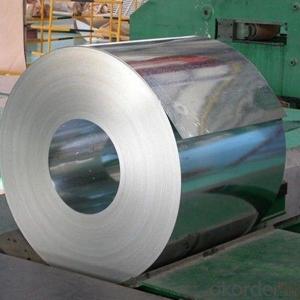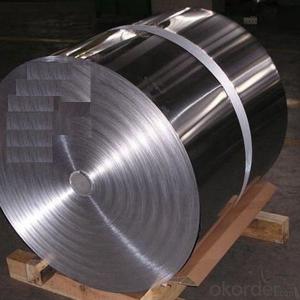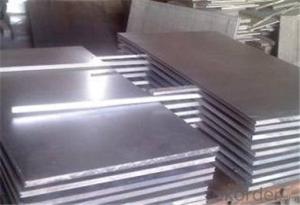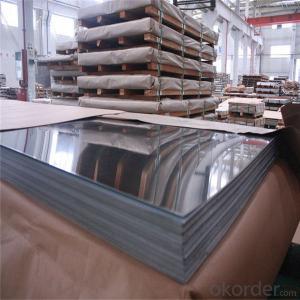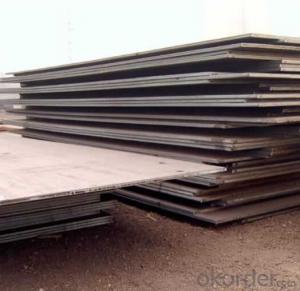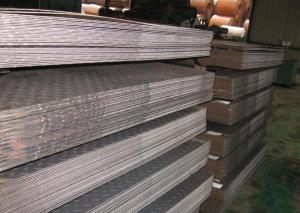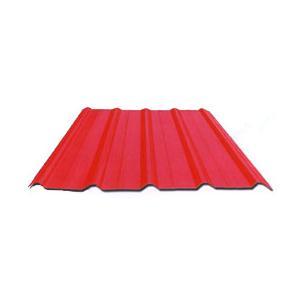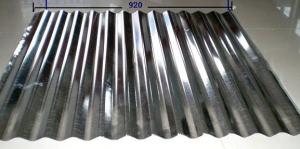MS Steel Sheet ASTM A36 Carbon Steel Plate
- Loading Port:
- Tianjin
- Payment Terms:
- TT OR LC
- Min Order Qty:
- 50 m.t.
- Supply Capability:
- 50000 m.t./month
OKorder Service Pledge
OKorder Financial Service
You Might Also Like
Specification
1.Description of steel plate:
Our products into high-strength low-alloy steel plate, carbon structural steel plate, alloy structural steel plate, boiler and pressure vessel steel plate, bridge steel plate, structural steel plate, shipbuilding steel plate and marine oil platform steel plate, pipe steel plate, high strength and high toughness steel plate, mold plate, corrosion-resistant plate, Wear-resistand steel plate, composite plate with 12 major series.
2.Size range: Steel Plate width 300-5000mm, thickness 5-600mm, length 1000-18000mm.
Usage: (1).used for metallurgical, mechanical, electrical construction field
(2).used for ships, military (armored) Construction
(3).used for outside engineering, machine tool base, automobile rear of products
3.Standard: According to user requirements, can be delivered the following criteria: National standards, the metallurgical industry, the American ASTM, ASME standards, Japanese JIS, German DIN, British BS, European EN, the international ISO standards and the standards specific board.
4.Inspection Standard: In accordance with China (JB4730, GB/T2970), United States (A435, A577, A588), Japan (JISG0801, JISG0901), Germany (SEL072), British (BS5996), France (NFS04-305) and other domestic and international testing standard production test.
5.Data of steel sheet:
Item name | Titanium plate | |
Standard | ASTM B265, ASTM F67, ASME | |
Grade | Gr1, Gr2, Gr3, Gr5, Gr7, Gr12 | |
Dimension | Hot rolled | Thk*W*L (4.1-60.0)*(400-3000)*(1000-7000)mm |
Cold rolled | Thk*W*L (0.3-4.0)*(400-1400)*(1000-4000)mm | |
Surface | Acid pickling | |
Application | Heat exchanger, chemical or medical industry | |
Advantages | High qualities, competitive price, strict inspection, prompt delivery. | |
6.Image of steel sheet:
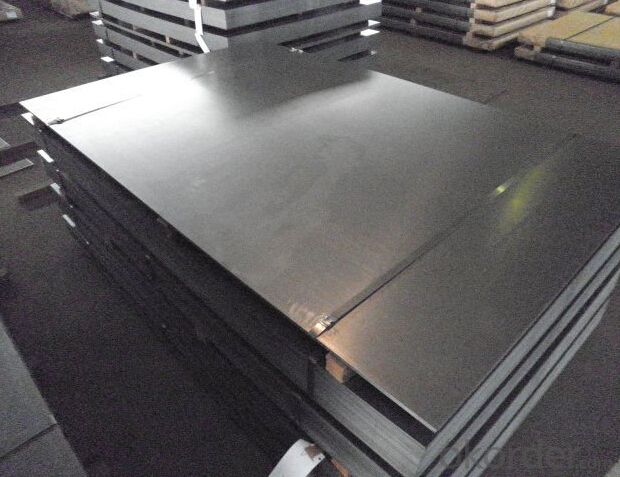
7.FAQ
We have organized several common questions for our clients,may help you sincerely:
①How about your Warranty?
Warranty: 1-Year for the whole light. Warranty is based on correct storage, installation, using and maintenanc
②How to guarantee the quality of the products?
We have established the international advanced quality management system,every link from raw material to final product we have strict quality test;We resolutely put an end to unqualified products flowing into the market. At the same time, we will provide necessary follow-up service assurance.
③How long can we receive the product after purchase?
In the purchase of product within three working days, We will arrange the factory delivery as soon as possible. The pecific time of receiving is related to the state and position of customers.Commonly 7 to 10 working days can be served.
- Q: What are the different types of steel sheet finishes for architectural applications?
- There are several different types of steel sheet finishes that are commonly used for architectural applications. These finishes not only enhance the aesthetic appeal of the steel sheets but also provide protection against corrosion and other environmental factors. 1. Mill Finish: This is the most basic type of finish, where the steel sheet is left as it comes from the mill. It has a dull, gray appearance and is typically used for applications where aesthetics are not a priority. 2. Brushed Finish: Also known as a satin finish, this type of finish is achieved by brushing the steel sheet with a fine abrasive material. It gives a smooth, linear texture to the surface, resulting in a contemporary and elegant appearance. 3. Polished Finish: This finish is achieved by polishing the steel sheet with abrasive materials until it becomes smooth and reflective. It provides a high-gloss, mirror-like appearance, making it suitable for applications that require a sophisticated and luxurious look. 4. Embossed Finish: In this finish, the steel sheet is pressed with embossing tools to create textured patterns or designs on the surface. This gives the sheet a unique and decorative appearance, making it ideal for architectural applications where visual interest is desired. 5. Patterned Finish: This finish involves applying a pattern or texture onto the steel sheet using various techniques like etching, laser cutting, or perforating. It creates a visually appealing surface with intricate designs, making it suitable for both functional and decorative purposes. 6. Powder Coated Finish: In this finish, a layer of dry powder paint is electrostatically applied to the steel sheet and then cured under heat. It provides a durable and vibrant finish, available in a wide range of colors and textures. This finish is highly resistant to chipping, scratching, and fading, making it ideal for exterior architectural applications. 7. Galvanized Finish: This finish is achieved by applying a layer of zinc coating onto the steel sheet through a process called galvanization. It provides excellent corrosion resistance, making it suitable for outdoor architectural applications where the steel sheet is exposed to harsh environments. Overall, the choice of steel sheet finish depends on the desired aesthetics, durability, and environmental conditions of the architectural application.
- Q: Can steel sheets be used for electrical motors?
- Yes, steel sheets can be used for electrical motors. Steel is commonly used in the construction of electrical motors due to its magnetic properties. The sheets of steel are typically used to create the core of the motor, which is responsible for generating the magnetic field necessary for the motor's operation. Steel has a high magnetic permeability, which means it can easily conduct and channel magnetic flux, making it an ideal material for this purpose. Additionally, steel is durable and can withstand the high temperatures and mechanical stresses that electrical motors may experience during operation. Therefore, steel sheets are often chosen as a reliable and cost-effective option for constructing electrical motors.
- Q: Are steel sheets resistant to impact or puncture?
- Yes, steel sheets are highly resistant to both impact and puncture due to their inherent strength and durability.
- Q: Is 5mm thick steel plate tapping M8 thread reliable?
- The pitch of the M8 is 1.25, it can attack 4 teeth. The force of the thread is 4-5 teeth. The bottom is not greater than 6.7mm, 8.8 plus elastic pad bolt.
- Q: Are steel sheets suitable for agricultural machinery?
- Yes, steel sheets are suitable for agricultural machinery due to their durability, strength, and ability to withstand harsh conditions commonly encountered in farming operations.
- Q: Can steel sheets be used for electrical enclosures?
- Yes, steel sheets can be used for electrical enclosures. Steel is a commonly used material in the construction of electrical enclosures due to its durability, strength, and ability to provide protection against various environmental factors. It also offers good electromagnetic shielding properties, making it suitable for containing electrical components.
- Q: Can steel sheets withstand extreme weather conditions?
- Indeed, steel sheets are engineered to endure even the harshest weather conditions. Renowned for its robustness and durability, steel proves to be an optimal substance for withstanding the unforgiving forces of nature, including fierce winds, torrential rain, heavy snowfall, and extreme temperatures. Frequently employed in construction, roofing, and outdoor applications, steel sheets are constantly exposed to diverse weather phenomena. Moreover, these sheets can be covered with protective coatings like galvanized or painted finishes, further fortifying their resistance against corrosion and weathering. Ultimately, steel sheets exhibit remarkable reliability, enduring severe weather conditions with minimal harm or deterioration.
- Q: Are the steel sheets suitable for architectural applications?
- Indeed, architectural applications can certainly make use of steel sheets. Steel, being a versatile material, presents numerous benefits for architectural purposes. It possesses strength, durability, and the ability to withstand harsh weather conditions, thus making it an excellent choice for various architectural elements like roofing, cladding, and facades. Furthermore, steel sheets provide architects with design flexibility, enabling the creation of unique and innovative structures. Moreover, steel is an environmentally sustainable material due to its recyclability and long lifespan, making it an eco-friendly option for architectural applications. All in all, steel sheets serve as a dependable and versatile choice for architects who desire to incorporate structural integrity, aesthetic allure, and sustainability into their designs.
- Q: What is the typical load-bearing capacity of a steel sheet?
- The typical load-bearing capacity of a steel sheet can vary depending on its thickness, size, and composition. However, steel sheets generally have high strength and can typically bear heavy loads ranging from several hundred to several thousand pounds per square inch.
- Q: How do you calculate the weight of a steel sheet?
- To calculate the weight of a steel sheet, you need to know its dimensions (length, width, and thickness) and the specific gravity of steel. Multiply the area of the sheet (length multiplied by width) by the thickness and then multiply the result by the specific gravity of steel (usually around 7.85 g/cm³). This will give you the weight of the steel sheet in grams or kilograms.
Send your message to us
MS Steel Sheet ASTM A36 Carbon Steel Plate
- Loading Port:
- Tianjin
- Payment Terms:
- TT OR LC
- Min Order Qty:
- 50 m.t.
- Supply Capability:
- 50000 m.t./month
OKorder Service Pledge
OKorder Financial Service
Similar products
Hot products
Hot Searches
Related keywords
